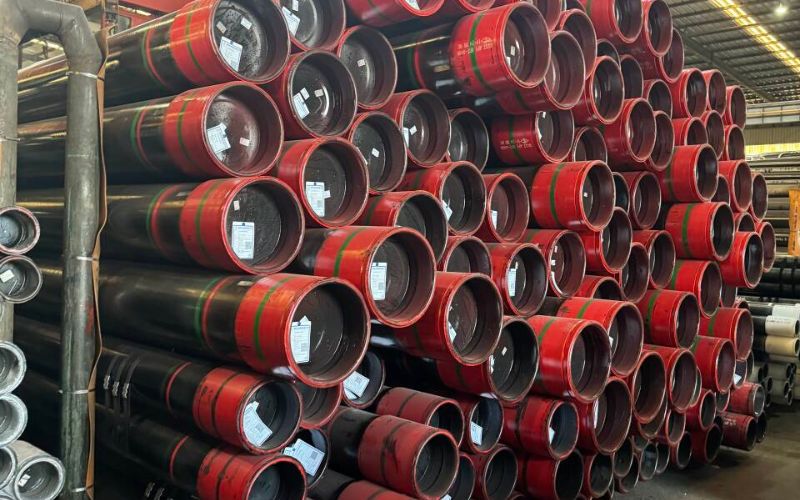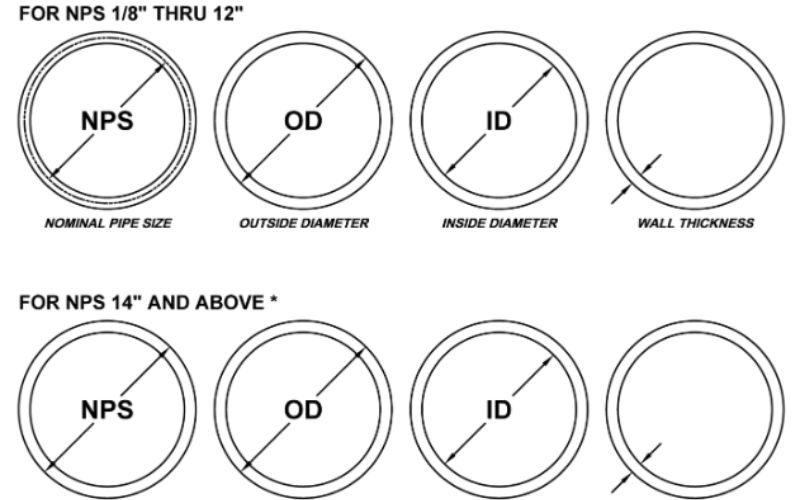Welding black iron pipe is a matter of feasibility and precision, creating utmost demands across various industries, including construction and plumbing. So the question arises: can black pipe be welded? If it can, then how does one do so efficiently? Consider the following manual, which reveals the mechanics behind black iron pipe welding, hence removing the mystery and taking into consideration material compositions, required equipment, and suitable safety precautions. After reading this article, you will have a proper understanding of welding black pipes confidently and ensuring the durability and structural integrity of all your projects.
Introduction to Black Pipe and Welding
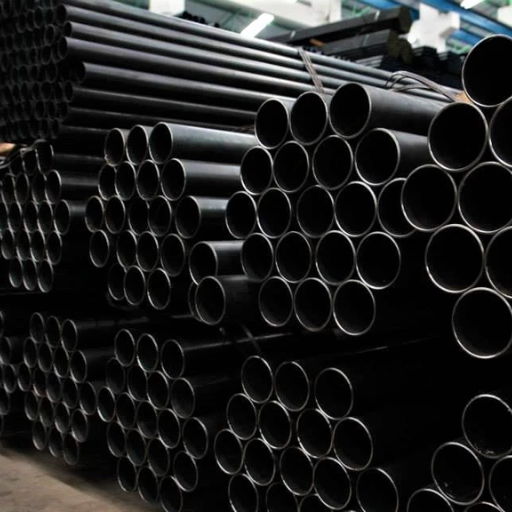
The black pipe, also known as black iron pipe, is a type of steel pipe commonly used for transporting natural gas or water in residential, commercial, and industrial applications. Being strong, sturdy, and capable of withstanding high pressures in service, it finds usage for all structural and plumbing needs. Welding black pipe refers to the process of joining pipe sections together by applying heat, typically using MIG, TIG, or stick welding procedures. A great deal of importance rests on the preparation of the pipe surfaces, pipe fit-up, and tight connections between the pipe ends to assure the welding is done correctly, is leak-proof, and holds under operating conditions. One must specify the treatment required for black-dimensional and composition-wise welding to select the correct methods and equipment. Once safety protocols are adhered to and the proper equipment is used, one can expect success and reliability in the welding job.
What is Black Pipe?
A black pipe, also known as black steel pipe, is primarily used to transport natural gas, propane, air, steam, or non-corrosive gases and fluids in industrial, residential, and commercial settings, and is manufactured from low-carbon steel. The term “black” derives from the blackish iron oxide coating that results from the manufacturing process. This black coating offers only limited resistance to corrosion, thereby rendering black pipe unsuitable for transporting water or any other substance that would be prone to rusting with time.
Black pipe differs from galvanized pipe, where a zinc layer is applied to ward off corrosion. A black pipe earns its chief claim to fame through its strength, cost-effectiveness, and ease of fabrication, thereby offering a reliable option for high-pressure applications. Apart from being used in fire sprinkler systems, it is also a viable candidate for structural work in various construction projects or DIY projects undertaken by individuals. Hence, a black pipe, due to its non-corrosion coating, is not suitable for outdoor exposure or humid environments unless at least an additional layer of protection is implemented.
Overview of Welding Techniques
Welding is a manufacturing process that joins different materials, typically metals or thermoplastics, using heat, pressure, or both. General welding procedures include:
- MIG Welding (Gas Metal Arc Welding-GMAW): A continuous wire electrode fed through the welding gun shields the weld pool with an inert gas, such as argon, or with a gas mixture. It is the easiest and fastest a person can do and fits most applications. It is excellent for thin metals.
- TIG Welding (Gas Tungsten Arc Welding-GTAW): TIG welds use a non-consumable tungsten electrode, and the joint generally requires filler material to complete. An inert gas, usually argon, shields the welding area. This exact joinery technique is suitable for thin, non-ferrous materials such as aluminum and stainless steel.
- Stick Welding (Shielded Metal Arc Welding-SMAW): The consumable electrode with a flux coating carries the current and produces an electric arc between the electrode and the workpiece. Great for stripping cast-offs, repair, or outdoor conditions, stick welding is a versatile process.
Each technique is employed with specific materials and applications in mind, along with its own benefits and limitations; ultimately, the choice of welding method depends mainly on the material and thickness of the project at hand. Every single human welding procedure needs to be learned and practiced safely.
Is It Safe to Weld Black Pipe?
✓ YES – It is generally considered safe to weld black pipe
So long as all considerations regarding the appropriate precursors and welding techniques are observed.
Black pipe is typically made from mild steel, which can be welded using standard welding methods, including MIG, TIG, or stick welding. However, for health and safety reasons, issues arise concerning the presence or absence of surface coatings, such as oil, lacquer, or mill scale, that may be present on black pipe. These coatings emit toxic fumes when heated during the welding process, posing a health risk to welders.
The best practice is to ensure that any oil, paint, lacquer, grease, or other contaminant is removed from the pipe before welding commences. This can be accomplished by cleaning the pipe with a grinding tool or applying a chemical solvent. Adequate ventilation should be provided, or an appropriate fume extraction system should be used while welding, to minimize potential exposure to harmful gases. Equally important would be the use of the correct personal protective equipment, including welding helmets, gloves, and respirators. If followed to relatively strict adherence, these considerations will afford them safety and effectiveness in the welding of black pipe, coupled with weld reliability and durability in specific applications.
Preparation for Welding Black Pipe
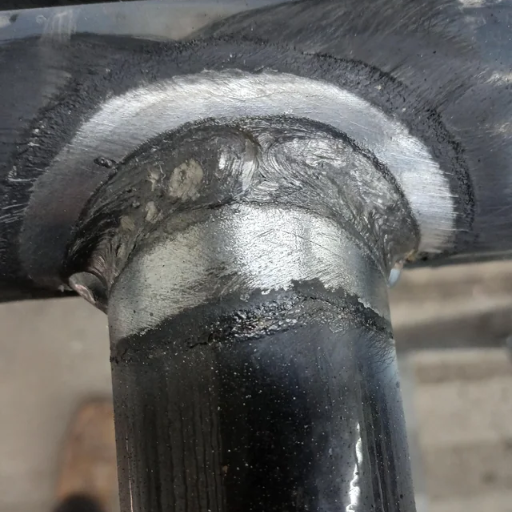
1. Cleaning Surface
Use a wire brush or grinder to remove any rust, oil, paint, or coatings from the black pipe surface, allowing the weld to penetrate effectively.
2. Cutting and Fitting
The pipe sections should be measured accurately and cut and fitted very well, ensuring tight joint alignment that leaves fewer gaps and enhances weld quality.
3. Ventilation Setup
Take care to provide adequate ventilation or a fume extraction system before welding to help extract dangerous fumes.
4. Using PPE
Appropriate personal protective equipment (PPE) should be worn, including a welding helmet with a suitable filter shade, heat-resistant gloves, safety glasses, and a respirator if required.
5. Checking the Equipment
The welding equipment must be checked to ascertain that it functions properly and is calibrated to the correct settings for the pipe material and thickness.
If followed as such, black pipe will be prepared for welding safely and efficiently.
Cleaning and Coating Considerations
Proper cleaning and coating of the black pipe ensures weld integrity and avoids corrosion. The pipes are cleaned before welding to remove oil, grease, mill scale, and any contaminants using methods such as wire brush, grinding, or chemical cleaning. Special caution should be given to the heat-affected zone (HAZ) so as to avoid introducing any foreign impurities that can affect compromise the weld. After welding, a protective coating should be applied to the surface to prevent oxidation and rust. The best available coated are epoxy paints, zinc-based primers, and powder coatings, which depend on the actual application and further provide excellent corrosion resistance and durability of the pipe. Always follow the instructions and directions given by the manufacturer of the cleaning materials and coatings, ruled by their compatibility with the pipe material and usage.
Necessary Tools and Equipment for MIG Welding
Recommend having an exhaustive set of tools and equipment for an ideal welding setup with MIG welding. Foremost cover your MIG welder, a shielding gas cylinder (usually argon mixed with carbon dioxide), and a spool of welding wire compatible with your welder setup. Ensure you have one extra welding helmet with an auto-darkening unit, a pair of heat-resistant gloves, and welding clothes to protect your skin from splatter and UV radiation. Additionally, wire cutters, a wire brush or grinder for surface preparation, and a welding cart or workbench are also necessary for steady working and easy movement. Also, maintain a habit of regular inspection and maintenance of your equipment to ensure optimum performance while adhering to safety guidelines.
Understanding Weldable Materials
Weldable materials are those that undergo welding without compromising mechanical integrity. Common weldable materials include steel (mainly carbon steel and stainless steel), aluminum, and other alloys such as nickel and titanium. Carbon steel is widely used because it is versatile and can be readily welded. Stainless steel, on the other hand, offers resistance to corrosion. Aluminum is light and resistant to corrosion, but requires a high degree of care during welding due to its speed in melting and thermal conductivity. Other variables that affect welding include the material’s chemical composition, its thickness, and the intended application. Selecting the proper filler, welding method, and/or preheating or post-heating procedures specific to the chosen material would yield further good welds capable of bearing loads.
Welding Methods for Black Pipe
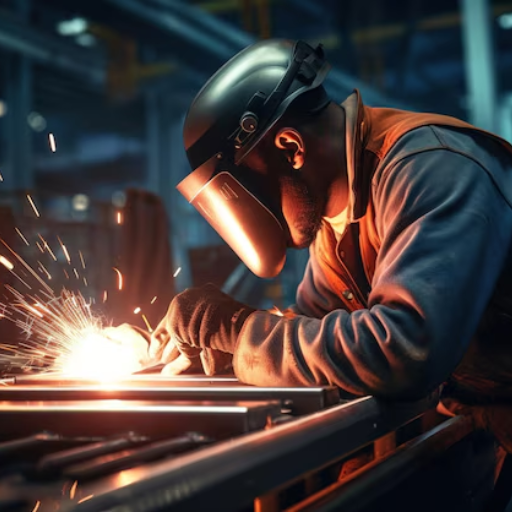
Welding black pipe requires consideration of the material’s characteristics and the application under consideration. SMAW, GTAW, and GMAW are common types. SMAW, or stick welding, is a low-cost method used for black pipe in structural and plumbing applications because it poses minimal problems in varying environmental conditions. GTAW, in contrast, is a method that offers control and is suitable for welding thin black pipe to the highest standard, with minimal or no defects. GMAW, however, is very fast and versatile and is best used where the piping is a little thicker. For a good weld, the surface must always be free from contaminants, such as oil or foreign matter, that can compromise the integrity of the weld.
MIG Welding Black Pipe
The welding of black pipe by MIG welding is one of the most common methods because it is fast, exceptionally versatile, and is the method of choice for thicker pipes. The best practice for welding is to clean all dirt, oil, paint, or rust off the pipe before beginning with the job because any contamination may weaken the weld. The use of a shielding gas—a combination of argon and CO2—is highly recommended to reduce oxidation of welds and provide a stable arc. The correct wire for the job (ER70S-6) will also improve penetration and reduce defects. Other critical parameters that should be set correctly are voltage, wire feed speed, and travel speed, which limit spatter or burn-through and encourage strong, consistent welds.
Stick Welding vs. MIG Welding for Black Iron Pipe
Stick welding and MIG welding for black iron pipe differ in cost, portability, skill level, material thickness, and weld quality.
Summary: Stick welding is more cost-effective and ideal for outdoor or rough conditions but sacrifices precision, whereas MIG welding offers cleaner and higher-quality welds with greater control, making it suitable for precise indoor applications.
Choosing the Right Filler Material
A proper filler metal must be chosen to meet welding requirements for tensile strength, durability, and the quality of a welded joint. Essentially, it depends on the base materials, the choice of welding method, and the application requirements.
-
Material Compatibility
The filler metal should closely match the base materials in their composition; otherwise, weak welds or cracking may occur. Common materials include carbon steel, stainless steel, aluminum, and various specialized alloys. You may have to check the specification from the manufacturer or consult a welding compatibility chart for more precise recommendations.
-
Mechanical Properties
The mechanical properties that the weld is to have, such as tensile strength, ductility, and impact resistance, should be considered. Filler materials may need to be selected with special consideration if the application involves unusually high stresses, erosion, or extreme temperature conditions.
-
Welding Process
Different welding processes require different types of filler materials, including solid wire for MIG welding, flux-cored wire for flux-core welding, and coated wire for stick welding.
-
Environmental Conditions
If the weld is going to be exposed to an outdoor or corrosive environment, select one of the filler metals that offers corrosion resistance, such as stainless steel or nickel-based alloys. Alternatively, low-hydrogen electrodes may be used to reduce the possibility of hydrogen-induced cracking in severely corrosive environments.
-
Application-Specific Considerations
Some application areas, such as aerospace, automotive, and pressure vessel construction, have stringent filler metal standards that may require spoken or applied certifications.
Cross-checking these considerations with the datasheets for your chosen filler will ensure that the weld achieves its maximum performance in service with a high level of reliability.
Technical Aspects of Welding Black Pipe
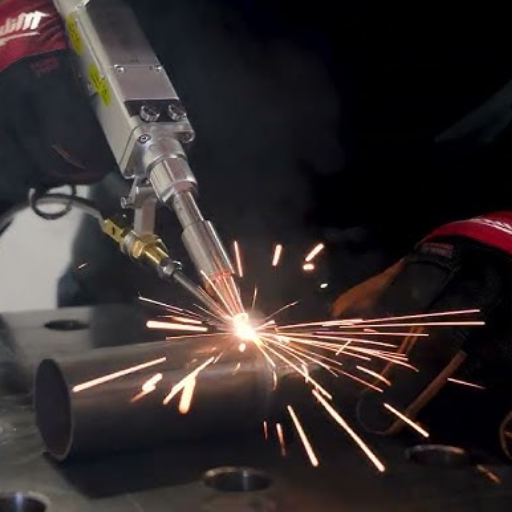
The welding process for black pipe requires an understanding of the material composition and the welding method used. Black pipe, essentially mild steel with a black oxide protective coating, is used in low-pressure applications such as sniffing gas or plumbing. The welding method must ensure consistency and full penetration while minimizing defects caused by the coating.
Key Considerations:
1. Material Preparation
The black oxide coating should be removed entirely in the vicinity of the welding area, thereby preventing the possibility of contaminants entering, porosity, or weak zones.
2. Welding Technique
Among MIG, TIG, and stick welding, the final choice depends on the application. TIG welds provide the most incredible precision and cleanliness.
3. Filler Material Selection
The filler metal used must be mechanically compatible with the pipe material to prevent joint failure.
4. Preheating and Post-Weld Treatments
Preheating may be necessary, depending on the pipe’s thickness and usage, to reduce thermal stresses. PWHT can be employed following the weld to enhance ductility and relieve residual stress.
5. Standards and Certifications
Ensure conformity to standards such as AWS D10.12, which specifies welding guidelines for carbon steel piping.
By understanding and following these aspects, one can ensure weld integrity, operational safety, and a long lifespan of the black pipe system.
Suitable Welding Techniques for Different Pipe Types
The application of welding processes in accordance with respective pipe materials requires the consideration of material composition, pipe thickness, and operational requirement. Here is a breakup of common pipe types and the welding methods recommended for them:
-
Carbon Steel Pipes
Carbon steel pipes are commonly used in various industries and are relatively easy to weld. Most widely, Shielded Metal Arc Welding (SMAW), Gas Tungsten Arc Welding (GTAW or TIG), and Gas Metal Arc Welding (GMAW or MIG) are employed. SMAW is best for heavy-wall pipes, whereas TIG welding is used for precise control on thinner sections or critical applications. Preheating and post-weld heat treatment should be considered when the carbon content is relatively high to prevent cracking.
-
Stainless Steel Pipes
They require techniques that preserve corrosion resistance and prevent contamination, such as GTAW/TIG or GMAW, with appropriate shielding gases, including argon or Argon-Helium mixtures. TIG welding is preferred due to its cleaner weld and ability to produce aerobically welded joints from thin-walled pipes, utilizing backing gas such as argon and other measures to prevent oxidation and carbide precipitation.
-
Alloy Steel Pipes
Alloy steel pipes, used in high-temperature and high-pressure environments, demand the application of special welding practices. SMAW, GTAW, and FCAW are among the techniques employed, depending on the specific alloy being considered. Preheating and control of interpass temperatures avoid hydrogen cracking, while PWHT is sometimes applied to restore the mechanical properties.
-
Copper and Copper Alloy Pipes
Considering high thermal conductivity, copper and copper alloys require welding that is paying due attention to the same. GTAW and MMAW techniques are primarily applied, with filler materials adjusted according to the copper alloy composition. Preheating ensures adequate penetration during fusion, especially in thicker joints, with careful attention to joint design.
-
Plastic Pipes
Similarly, welding of thermoplastic piping systems, such as PVC or polyethylene, is performed using specialized methods, including Heat Fusion, Socket Fusion, or Electrofusion. These welding methods involve the controlled application of heat and pressure to create durable joints. The surface preparation of the materials, along with alignment during fusion, is critical for leak-proof joining.
A weld can be made integral and defect-free, conforming to industry standards, by tailoring the welding technique to the respective pipe material.
Pipe to Steel Welding Considerations
When joining pipe to steel, several critical factors must be considered that involve structural integrity and safety. Typically, the optimum welding technique should be selected for the job, depending on the material type and thickness. These include MIG, TIG, or Stick welding. The compatibility of the pipe and steel materials must be ensured to avoid ambiguity that can arise from cracking or corrosion. Preheating may be required for certain steels to prevent thermal stress and enable pure fusion. The cleanliness of the flux is critical to avoid contamination. Maintaining weld parameters, including amperage, voltage, and speed, is crucial for achieving the required strength and avoiding defects. Following codes and standards relevant to the industry, such as ASME or API, ensures the welded structures maintain conformity and integrity.
Achieving Strong Welds: Tips and Best Practices
1. Material Preparation
Weld base materials must be cleaned to ensure that any rust, oil, grease, or other contaminants do not interfere with weld quality; good surface preparation aids fusion and hinders defect formation.
2. Choose the Proper Electrode or Filler Material
Select an electrode or filler material compatible with the metals being welded. The choice also depends on properties such as tensile strength, ductility, and corrosion resistance, best suited for the application.
3. Set the Welding Parameters Properly
Control the welding voltage, amperage, travel speed, and heat input according to the material specification and welding process. Proper parameter control minimizes undercutting, porosity, and imperfect fusion.
4. Control Heat Input Temperature and Interpass Temperature
A higher heat input is detrimental to the material, whereas a lower heat input causes insufficient penetration. Additionally, controlling interpass temperatures helps reduce stress and mitigate cracking in multi-pass welding.
5. Inspection and Testing regularly
To ensure the weld’s structural integrity, incorporate NDT schemes like ultrasonic or radiographic testing to detect defects for corrective measures. Regular inspections ensure conformity with industry standards and project specifications.
Safety Precautions When Welding Black Pipe
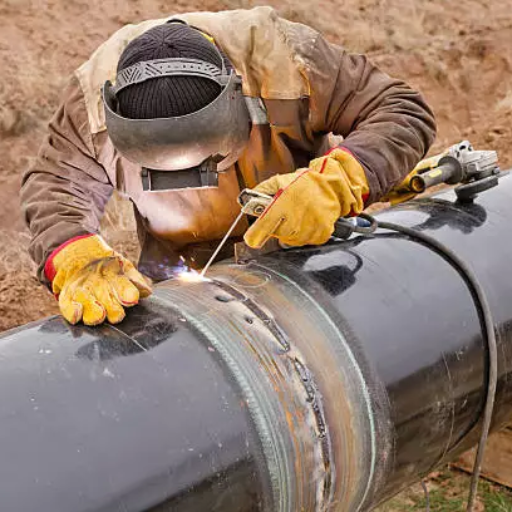
⚠️ Critical Safety Alert
Welding black pipe involves specific safety risks that require strict adherence to safety protocols to prevent injury and ensure optimal results.
-
1. Ensuring Proper Ventilation
Welding black pipes releases fumes that may be harmful in the presence of specific substances. Use ventilation systems and/or fume extractors to prevent human exposure.
-
2. Including Safety Guards
Put on PPE, which includes welding helmets with proper filters, fire-resistant clothing, gloves, and steel-toed boots.
-
3. Check for Flammable Materials
Black pipes may still bear traces of oil, a coating, if any, which could catch fire. Always thoroughly scrub and inspect all pipe surfaces before welding.
-
4. Observe Gas Leak
In the case that the black pipe represents part of a gas system, ensure it has been depressurized and purged beforehand to prevent it from exploding during welding operations.
-
5. Electrical Safety
Follow standard electrical safety practices. Inspect the welding equipment for electrical hazards before welding to ensure it is properly grounded and insulated, thereby preventing electric shocks.
-
6. Follow Industry Regulations
All possible codes and standards, as well as manufacturer instructions, must be strictly adhered to during welding for any variation of the scenario.
Protective Gear and Equipment
Considering the environment, welders are subject to various hazards; therefore, different protective gear and equipment are crucial for their safety. As the glory of ultraviolet (UV) and infrared (IR) radiation would burn a welder’s eyes and face in an instant, the welding helmet with proper shade filters is the most essential protection. Flame-resistant clothing protects the body from burns and heat exposure. Welding gloves allow dexterity while protecting the welder’s hands from heat. Respiratory devices, such as fume extractors or respirators, are also necessary when working in areas with poor ventilation to reduce the risk of inhaling harmful fumes. Lastly, steel-toed boots with anti-slip soles are preferable since they safeguard the feet from heavy falling objects and hot metals. If one observes all of these safety measures, it will reduce the hazards posed and therefore increase overall safety for the workers.
Avoiding Hazards in the Welding Environment
PPE is the first line of defense I try to ensure when it comes to avoiding hazards. This includes everything from welding gloves to respiratory protection and steel-toe boots, so a worker is shielded from heat, fumes, and heavy materials. I make sure that there is proper ventilation or an exhaust system to keep toxic welding fumes at a lower level. Furthermore, I regularly examine my tools and work area to identify any potential risk factors and eliminate hazards, including malfunctioning tools and combustible materials that may be nearby. I always stay informed through trusted industrial resources, and I adhere to the safety protocol in my working environment to ensure the place remains safe and productive.
Understanding the Risks of Welding Black Iron
Welding black iron is somewhat risky due to the material’s nature and the welding process employed. Black iron, typically a low-carbon steel, is often coated with oil or a residue from the manufacturing process, and it produces toxic fumes when heated. Prolonged exposure to such fumes can lead to significant respiratory problems, ranging from metal fume fever to long-term health implications. Additionally, the irregular surface of black iron, if not cleaned thoroughly before welding, can produce weak joints due to inadequate weld penetration. PPE must be worn; proper ventilation or fume extraction must be ensured; and coatings and contaminants must be adequately cleaned from the material before welding to reduce the risks. These measures would lead to safer welding and more effective results.
Reference Sources
- Weld Guru: Can You Weld Black Iron Pipe? And is it Safe to do so? – This article explains the properties of black iron pipe and its weldability.
- Reddit – Welding Community: Welding “standard” iron plumbing pipes/fittings? – A discussion on welding black or grey iron plumbing hardware.
- MIG Welding Forum: Black Iron can I weld it? – Insights into the types of black pipe fittings that can be welded.
- Reddit – Metalworking Community: Welding black gas pipe? – A discussion on welding black gas pipes and the techniques involved.
- Top Black Steel Pipe Supplier In China
Frequently Asked Questions (FAQs)
❓ Can black steel pipe be welded safely?
Yes, black steel pipe can be welded safely. However, welding must be performed by a skilled professional who is familiar with the properties of black steel pipe. Another important consideration is to take safety precautions when welding to prevent hazards such as exposure to fumes or heat.
❓ What are good welding methods for black iron pipe?
The welding methods most commonly applied to black iron pipe are the ones of MIG and TIG. These methods offer good strong welds and are suitable joining methods for black malleable iron fittings and components. Make sure the correct filler material is used for best results.
❓ What are some good practices of welding black iron pipe?
Some of the best practices for welding black iron pipe include cleaning the surfaces to bare metal, selecting suitable welding techniques with heat control to prevent warping, applying pipe dope, and ensuring proper fit-up.
❓ Can cast iron fittings be welded to black pipe?
It’s deemed quite difficult to weld cast iron fittings to black pipe because of the very different properties of the materials. While possible, some specialized welding techniques and filler materials would be required for a strong bond. Often, it’s better to use threaded or screwed fittings instead.
❓ What should be considered when welding galvanized steel to black pipe?
When welding galvanized steel to black pipe, one must remove the zinc from the areas to be welded, as this will cause the production of very poisonous fumes during the welding process. Therefore, safety precautions must be maintained through the use of protective gear and adequate ventilation.
❓ Is it dangerous to weld black pipe?
Yes, several risks exist with welding, including black pipe-welding fumes that are very harmful, burns from heat, and, if not done correctly, creating faults or weaknesses in structures. Adhering to safety requirements and proper welding techniques will help lessen these dangers.
🔧 Conclusion
Welding black pipe is not only feasible but also safe when proper techniques, equipment, and safety measures are employed. By following the guidelines outlined in this comprehensive guide, you can achieve strong, reliable welds while maintaining the highest safety standards throughout your welding projects.



